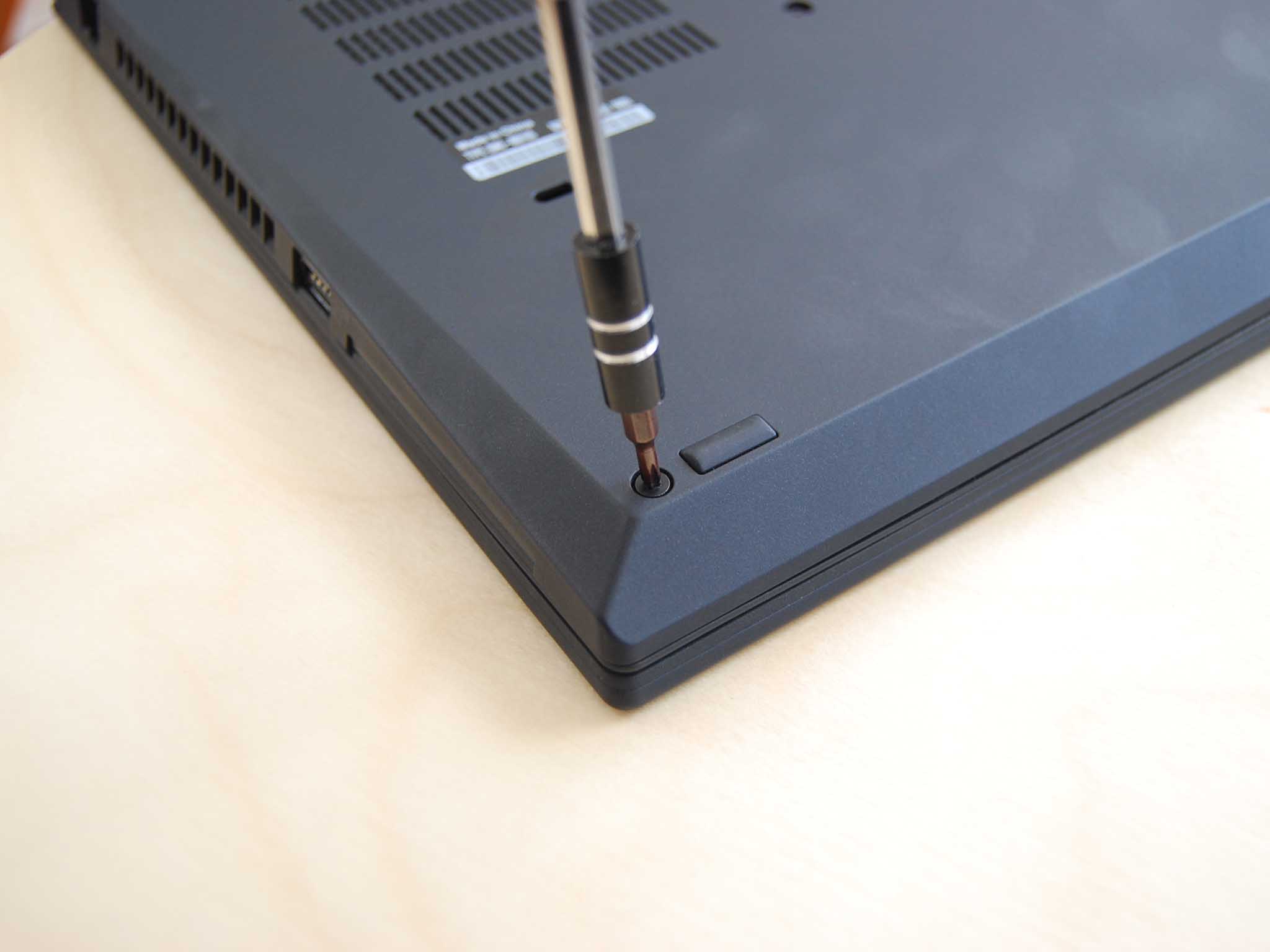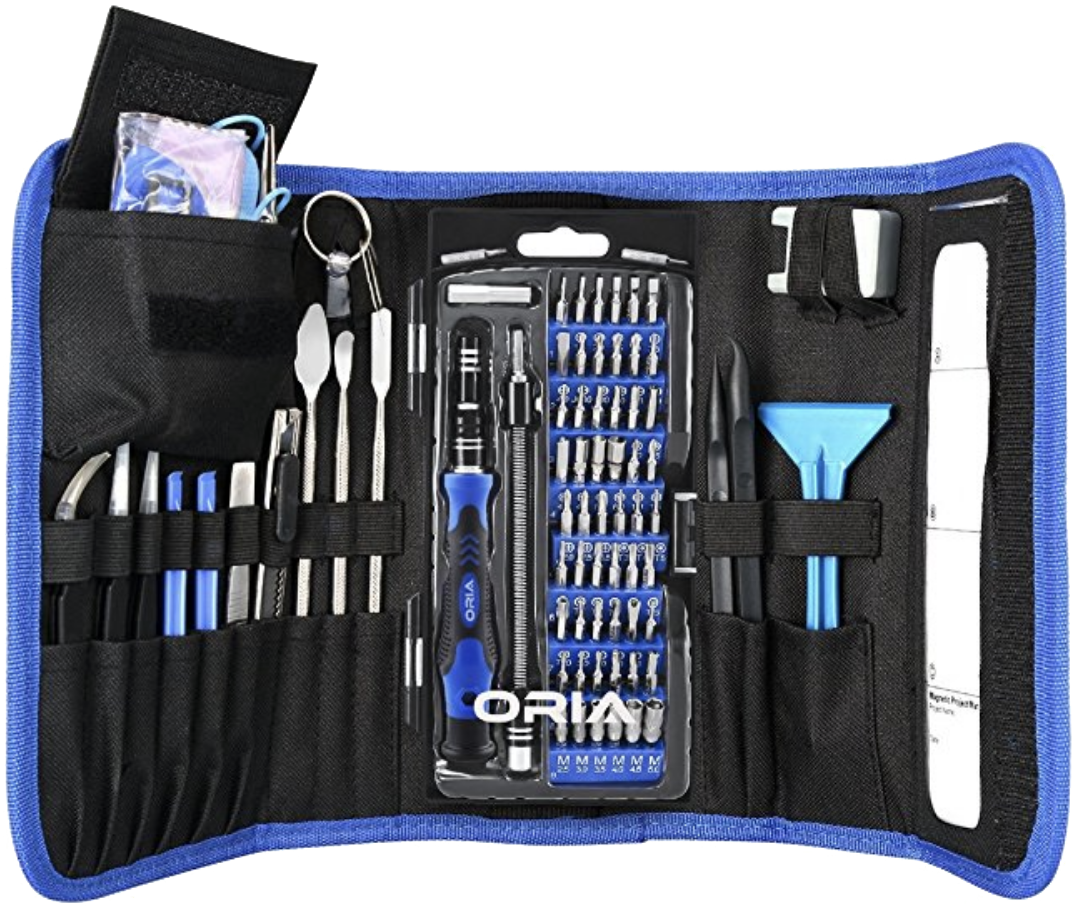
Part of the charm of Lenovo's outstanding ThinkPad T490 business Ultrabook is its design, which allows for upgrades to RAM and storage after purchase. While you can get up to a blazing fast 1TB PCIe solid-state drive (SSD) straight from the factory, that might still not be enough space. You might also want to save some money at first with smaller storage and upgrade later. Whatever your reason, we've laid out a complete guide to walk you through the SSD upgrade process in your ThinkPad T490.
Hardware and software to get the job done
- M.2 PCIe NVMe SSD: Samsung 970 EVO Plus (From $69 at Amazon)
- SSD enclosure for cloning: ElecGear M.2 PCIe enclosure ($50 at Amazon)
- Cloning tool: Macrium Reflect 7 (Free at Macrium)
- Prevent damage: Rosewill anti-static wristband ($7 at Amazon)
- All required tools: ORIA PC toolkit ($33 at Amazon)
- 14-inch business Ultrabook: Lenovo ThinkPad T490 (From $1,129 at Lenovo)
How to upgrade the SSD in your Lenovo ThinkPad T490
Note: Before beginning any upgrades on a PC, it's a good idea to back up your data in the unlikely event something should go wrong. You'll also want to ensure you're not working in a static-filled environment, as it can cause damage to a PC's internal hardware. Consider investing in an anti-static wristband to avoid unnecessary damage.
There are a number of ThinkPad T490 configurations available from Lenovo, ranging from a 128GB M.2 PCIe SSD up to a 1TB M.2 PCIe SSD. In our review, we noted stellar read and write speeds from the Toshiba XG6 M.2 SSD, and at 1TB it should be enough storage for awhile. However, if your model has a smaller SSD or your model didn't come with the same product — manufacturers often go with what is available at the time, and your machine might not have the same hardware with the same performance — you have the option to swap out the old SSD with a new one. In this case, we recommend the Samsung 970 EVO Plus for its superb performance, reliability, and competitive price.
However, gone is a secondary hard-disk drive (HDD) option in the ThinkPad T490, which means you will no doubt want to clone Windows 10 and any apps over to the new SSD before the physical installation. This process is made easy with an external M.2 SSD enclosure and cloning software, which essentially makes an exact copy of your old drive on a new drive that's connected temporarily via USB-C to the enclosure. We've has success with Macrium Reflect 7, and have even written a complete guide to help you through the cloning process.
On the other hand, if you're not entirely keen on what's stored on your old drive, you can do a clean install of Windows 10 after upgrading the SSD, but know that you'll essentially be starting from scratch.
Once you've backed up your data and have decided whether to clone or to start fresh, you can go ahead with the SSD upgrade. Clear out a well-lit workspace, power off your ThinkPad T490, and proceed with the steps below.
- Unscrew the six black fasteners on the back panel using a Phillips-head screwdriver. The screws will not come back out entirely despite being completely loosened. This is to prevent loss.

- Pry up the back panel using a pry tool. Start at one corner and work your way around the laptop.

- Unscrew the single black fastener at the end of the M.2 PCIe SSD.

- Pull the M.2 PCIe SSD carefully away from the slot. It should come away with relative ease. If the silicone strip doesn't stay attached to the motherboard, carefully peel it off and either stick it to the underside of the new SSD or again to the motherboard.

- Insert the new M.2 SSD into the slot. Notice it is keyed and will only fit one way.

- Screw in the single black fastener at the end of the M.2 SSD. Be careful not to overtighten.

- Replace the bottom panel of the laptop by applying pressure until you hear it click back into place.

- Screw in the six fasteners on the back panel.

You can now boot up your ThinkPad T490 and see if the upgrade went according to plan. If you chose to do a fresh install of Windows 10, now is the time to do so.
Get the Windows Central Newsletter
All the latest news, reviews, and guides for Windows and Xbox diehards.
Our top hardware and software picks
Our pick for an upgrade M.2 PCIe NVMe SSD is Samsung's 970 EVO Plus. It's incredibly fast, it's long-lasting, and it's relatively cheap for the performance you're getting.

Unreal performance up to 1TB in size
Samsung's 970 EVO Plus brings blistering read and write speeds, a competitive price, and a 5-year warranty, which altogether is an impressive package. Sizes start at 250GB and go up to 1TB.
Lenovo's ThinkPad T490 is a solid choice for a 14-inch business Ultrabook thanks to gorgeous WQHD display option, comfortable keyboard, generous port selection, dedicated GPU option, and a slim and light build. Along with SSD upgrade, RAM can also be upgraded.

Durable laptop with a knockout display
The ThinkPad T490 has been slimmed down and has lost its modular battery, but it's still undeniably an impressive Ultrabook. The WQHD is outstanding, the keyboard and touchpad are as good as ever, and there are a ton of ports to work with.
Additional Equipment
To make the upgrade process easier and less risky, consider investing in some of these affordable PC tools, and don't forget about Macrium Reflect and an external enclosure for those who want to clone drives.

ElecGear M.2 PCIe enclosure ($50 at Amazon)
If you're cloning the original SSD to the new SSD, an external enclosure is needed. This option from ElecGear fits M.2 PCIe NVMe SSDs and can connect back to your ThinkPad T490 with USB-C or USB-A.

Macrium Reflect 7 (Free at Macrium)
We've had success cloning drives with Macrium Reflect 7, and have even written a complete guide on how to use it properly. A free edition is available, but you can purchase a full edition with a bunch more features for those who truly take backups seriously.

ORIA PC toolkit ($33 at Amazon)
Having the proper gear to work on your PC will always make the job much easier. Here you get a plethora of tools contained in a portable case.

Rosewill anti-static wristband ($7 at Amazon)
Static electricity can damage sensitive PC parts, so remove the risk with an anti-static wristband. Fasten it around your wrist and clip it onto your PC for peace of mind.

Cale Hunt brings to Windows Central more than eight years of experience writing about laptops, PCs, accessories, games, and beyond. If it runs Windows or in some way complements the hardware, there’s a good chance he knows about it, has written about it, or is already busy testing it.
